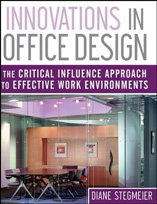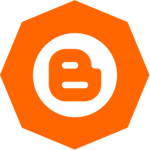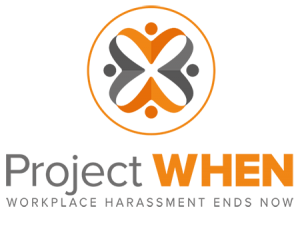Critical Influence™: Knowledge Management
What is knowledge management and why should it matter to your company?
 In today’s economy, knowledge is a tool for survival and an asset for competitive advantage. Knowledge management continues to become more and more essential for organizational success.
In today’s economy, knowledge is a tool for survival and an asset for competitive advantage. Knowledge management continues to become more and more essential for organizational success.
In the past, organizations realized the far-reaching impact of intellectual capital embedded in their people and processes.
More recently, enormous efforts have been exerted to develop effective systems of storing information for easier access in daily business operations. This is how knowledge management became a valuable undertaking in companies.
Knowledge management is commonly associated with the process of accumulating, structuring, disseminating, updating and using information within the organization. The reasoning behind gathering and storing data is to allow easy access, retrieval, and leverage of company intelligence for the benefit of the organization.

As part of the 15 Critical Influences™, this page on Knowledge Management is integrated with actual content from the book Innovations in Office Design: The Critical Influence Approach to Effective Work Environments™ by SCG Founder Diane Stegmeier.
Knowledge management in the era of remote work
Data in today’s business climate needs to be readily available 24 hours a day to enable employees to make wise business decisions. Without an efficient way of housing information, daily business activities such as providing answers to customer concerns would be chaotic and time consuming.
The internet has revolutionized the process of managing intellectual assets within companies. Today, knowledge management practices are gradually veering away from creating an elaborate system of organizing hard copies in a specific area in the office. Organizations now see the need to invest in software and hardware tools that will best support the effective distribution and application of data.
Cloud-based tools like DropBox, Google Drive, and Microsoft OneDrive have allowed companies big and small to place critical information at the fingertips of knowledge workers. And while remote work was already mainstream, the COVID-19 pandemic saw companies embark upon the world’s largest work-from-home experiment. Record numbers of office workers were abruptly sent home to work, many with no training on best practices for remote work. User adoption for Zoom, Google Meet, Microsoft Teams, and WebEx skyrocketed and now employees are a brief video call away from getting the information they need to solve new problems.
But knowledge management is not only powered by technology (one of the other 14 Critical Influences ™). The physical workspace also closely ties to the system of managing valuable information in companies. Even though remote work has increased in popularity, physical work environments still play a large role in enabling learning and in how knowledge is transferred. Let’s examine how the office environment correlates with knowledge management in the next sections.
How knowledge management relates to workplace flexibility
When organizations are considering implementing workplace flexibility, greater emphasis should be placed on the development of an effective and efficient knowledge management system.
It is good when companies have developed an easily accessible, elaborate database of knowledge, but when information cannot be easily accessed unless employees are in the office or on-campus, and appropriate technology is not in place, flexibility is next to impossible.
 Aside from this, a barrier is created to the effectiveness of the knowledge management system when there is a lack of trust in the interpretation and application of data by employees. Though the physical space supports the optimization of data that has been carefully gathered and categorized, not trusting employees to put in a full day’s work will undermine both the workplace strategy and the knowledge management initiative.
Aside from this, a barrier is created to the effectiveness of the knowledge management system when there is a lack of trust in the interpretation and application of data by employees. Though the physical space supports the optimization of data that has been carefully gathered and categorized, not trusting employees to put in a full day’s work will undermine both the workplace strategy and the knowledge management initiative.
Even in an organization where trust is not an issue, the increased mobility of the workforce may still impede data access. Data that is available to an employee while he or she is in the office may fail to be optimized if critical information cannot be accessed when the employee is face to face with a key customer who is concerned about the company’s products and/or services. In the words of Sandy Price, Sprint Nextel’s senior vice president of human resources, “You should have what you need, when you need it, embedded into your tool at the point of business impact.”
How workplace design enables successful knowledge management
An interesting design challenge presented to HOK Canada involved a complex requirement for knowledge management. Don Crichton, vice president of workplace solutions, shared his firm’s experience in developing an office solution for a group of separate entities, each dedicated to prevention of workplace injury and illness.
The project began as a consolidation study focused on the real estate holdings of four distinct health and safety organizations: the Electrical & Utilities Safety Association (E&USA), the Industrial Accident Prevention Association (IAPA), the Ontario Service Safety Alliance (OSSA), and the Transportation Health and Safety Association of Ontario (THSAO). Together, these four enterprises served 80 percent of workers in Ontario, Canada; yet at the time of the real estate study, they did not have the benefit of being colocated, to support an exchange of knowledge between the individual groups, nor their external interactions with the research community and diverse businesses.
Each of the four founding partners wanted to maintain its unique identity and have the new location support its physical space requirements. Shared spaces and business services would not only serve the goal of improved knowledge sharing, but also result in cost efficiencies for the collective partner group.
HOK Canada’s solution was to design a suite of offices for each of the four founding partners. Areas that would be shared by all included conference rooms, training and meeting rooms, a resource center, a retail store, a wellness facility, and a full-service cafeteria. Designed to exist in harmony under one roof, these individual and shared spaces, totaling 120,000 square feet, became known as the Centre for Health & Safety Innovation (CHSI).
The importance of knowledge exchange was reflected in HOK’s dramatic design of the Promenade, a spacious circulation path bathed in natural light. Benches were placed in the wide corridor to invite casual, open conversations, yet were strategically positioned to allow private dialogue.
One of the core values of the organization is to “lead by example in creating a healthy and safe environment.” To that end, HOK incorporated sound principles of ergonomics in the individual workspaces for the 400 employees working in the Centre’s offices. CHSI’s commitment to knowledge sharing on health and safety principles, coupled with its value of leading by example, resulted in a workplace solution that “walked the talk.”
Proper lighting was installed to reduce eyestrain, complemented by access to natural light and an appropriate balance of task and ambient lighting. The full-service cafeteria, too, was designed for exposure to natural light. Decorated with vibrant-colored tables and chairs reminiscent of a diner, it looks out to the street level. Other break areas adjacent to clusters of workstations enable employees to gather for informal knowledge exchanges, or just for a quick respite from their workstations.
And to highlight the pride the Centre for Health & Safety Innovation takes in its dynamic training and educational programs, HOK added a wide, glass sidelight next to the training room door, and designed a learning environment where program participants can study without the feeling of isolation inherent in windowless training facilities. Similarly, HOK’s design of a variety of small meeting areas, to support spontaneous interactions among employees of the four groups, effectively addressed the nuances of diverse user preferences. For example, two small rooms placed side by side were designed differently. One features side chairs and a more conventional round meeting table. The other contains oversized, mobile chairs with tablet-arms.
Consulting services to help you align your approach to knowledge management with your new workplace strategy
When managing complex workplace transformations, it is important that critical business assets such as valuable knowledge or information is effectively administered to all team members. Stegmeier Consulting Group will work with you to make sure that your employees have the right tools and facilities they need in order to mobilize them while being introduced to new ways of working.
Whether you are expanding flexible work arrangements or implementing a change to your physical workplace, SCG can help. We can ensure factors such as knowledge management are leveraged in your new workplace strategy. Get started by filling out the form below.



